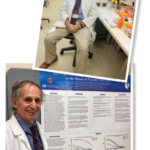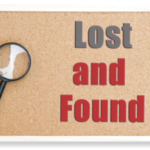
After almost 40 years in medicine, I think that I know a thing or two about drug therapy. I have treated thousands of patients, participated in clinical trials, and run a lab focused on mechanisms that can be targeted for new treatments. My bona fides should therefore be in good shape.
I like to teach and, for pedagogical purposes, have tried to distill this accumulated knowledge into clever and witty bite-sized pieces of information to enlighten and entertain my trainees. In today’s lexicon, these bullets of information would be called “teaching points” or “take-home messages” but, in reality, they are the wisdom of an elder (alas, that’s what 40 years on the job makes you).
Not afraid of self-promotion, I want to name these precepts after myself, although I am undecided whether they should be called Pisetsky’s Rules, Laws, or Maxims. Perhaps Pisetsky’s Rules sets the right tone. At this point, there are many such rules. Here are a few:
- The best way to reduce the side effects of a drug is not to prescribe it.
- Drugs come to market underdosed or overdosed. The trouble is that you don’t know which it is.
- Unless you are treating cancer, watch out for drugs that kill cells.
Of all the rules, the one which I think is the most important (and to which I fervently want my name attached in eternity) is this one: A drug becomes dangerous the moment that you think it is safe. I thought that this rule was original and important and, indeed, if respected and applied, would make the use of drugs more safe and responsible. Imagine my disappointment when I discovered that what I thought was a brand-new insight was well known and already had a name: the Peltzman Effect. Forget Pisetsky’s cardinal rule of drug therapy; Peltzman got there first.
The Peltzman Effect
The Peltzman Effect was promulgated by the economist Sam Peltzman after the work of Ralph Nader on car safety, and was a rejoinder to the idea that exposing safety defects would diminish the carnage on the highway. The common-sense notion—indeed, the foundation of Nader’s work—is the proposition that the knowledge that cars can be dangerous would spur engineering advances to boost safety. Think seat belts, airbags, and anti-lock brakes.
Is there any conceivable way that such nifty innovations could fail to make highways less treacherous places? To that question, Peltzman answered that engineering improvements regulated by law could detract from safety because people felt more secure and therefore took more risks on the road, their more rash behavior nullifying safety benefits. If I think that my brakes can stop my car on a dime, I may put the pedal to the metal or drive on slick icy roads as if they were dry pavement. Or, knowing that I am surrounded by a protective cushion of airbags that can poof instantaneously with the slightest jar, I may text a message while cruising down U.S. Interstate 95 at 70 miles an hour.
Although the reality of the Peltzman Effect can be debated, the relevance to drug safety is very clear. Any drug that comes to market carries risks and incredible unknowns, both in the short term and long term. A product approved by the Food and Drug Administration has undergone reasonable scrutiny, but the sample size of most phase 3 clinical trials is actually quite small. A trial of 2,000 people (or even 20,000 people) can tell, at best, an incomplete story. The more a drug is used, the more its risks will become apparent. If a drug is used too cavalierly, the Peltzman Effect says that the risks may quickly outweigh the benefits.
Complicating any assessment of safety from a clinical trial is the exclusion of patients because of age or comorbidities. Furthermore, a small trial is unlikely to detect a small increase in a common event (e.g., myocardial infarction or stroke). If the product is intended for high-risk patients (e.g., the elderly) and may be used by millions of people when it comes to market, that small percentage increase can become a large absolute number.
Witness what happened with Vioxx (rofecoxib), a coxib thought to be safer because it was less likely to disturb the gastrointestinal tract. Perhaps more than any drug, Vioxx is the poster child for the Peltzman Effect. It became so because our guard was down and we focused on what the endoscope and not the angiogram showed.
Of all the rules, the one which I think is the most important (and to which I fervently want my name attached in eternity) is this one: A drug becomes dangerous the moment that you think it is safe.
Weighing Drug Safety in Rheumatology
Rheumatologists should be especially concerned about drug safety because our specialty deals with common conditions, many of which primarily affect older people. Although these are serious and debilitating diseases, they do not usually cause direct mortality. Diseases such as rheumatoid arthritis (RA) can shorten the life span, but decades of active disease may be required before that survival effect is manifest. Thus, drugs for the common forms of arthritis must be very safe. Indeed, for a long time, rheumatology was a leader among specialties in having its drugs pulled from the market.
Our field has been very lucky in that the major new drugs introduced into the armamentarium—most notably, the biologicals to treat RA—have had a favorable balance of risks and benefits. The Peltzman Effect warns, however, that prudence and vigilance remain essential in the use of these agents and that, with the passage of time, we should become perhaps more, not less concerned, about the danger lurking in the medicine chest (or in the refrigerator in the case of biological products).
Inhibiting tumor necrosis factor may be okay for five years, but after 10 years, cancer cells may stir in what for them is a salutary environment, where tumor-killing macrophages slumber and sleep. Alternately, bones may suffer catastrophic collapses due to prior microfractures that could not be healed because osteoclasts had been pummeled into submission by bisphosphonates.
In coming issues, The Rheumatologist will increase its coverage of drug safety. The goal of these articles will be to present emerging information on the crucial issues of risks and benefits of drugs currently in use. We want to inform and alert you about data to allow you and your patients to make the best decisions in the face of what will always be uncertainty.
Another of Pisetsky’s rules of drug therapy is that drug safety is a personal matter. In a future column, I will discuss what I think you can do to make the treatment of rheumatologic disease safer.
Dr. Pisetsky is physician editor of The Rheumatologist and professor of medicine and immunology at Duke University Medical Center in Durham, N.C.


